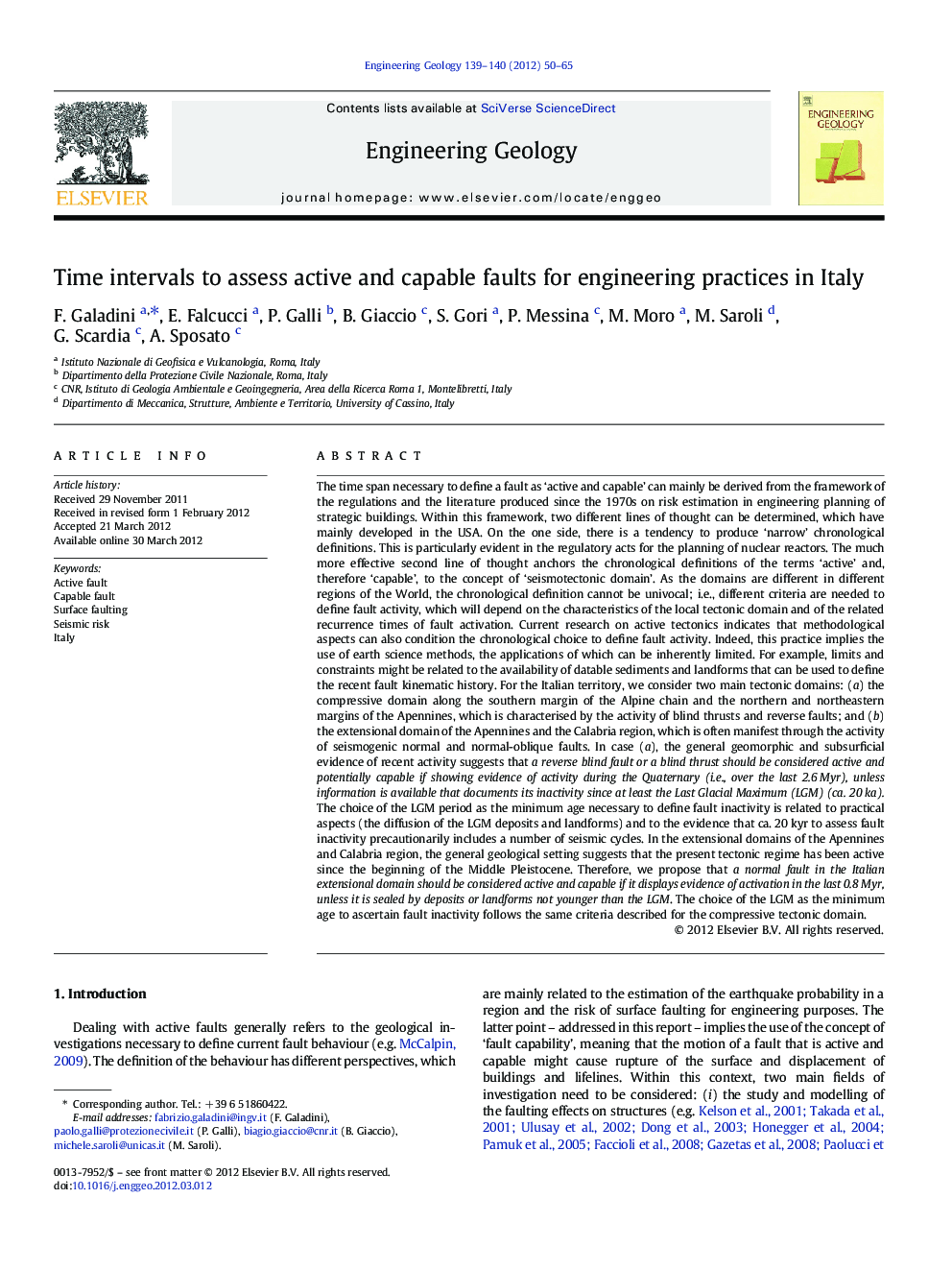| کد مقاله | کد نشریه | سال انتشار | مقاله انگلیسی | نسخه تمام متن |
|---|---|---|---|---|
| 4744079 | 1641838 | 2012 | 16 صفحه PDF | دانلود رایگان |

The time span necessary to define a fault as ‘active and capable’ can mainly be derived from the framework of the regulations and the literature produced since the 1970s on risk estimation in engineering planning of strategic buildings. Within this framework, two different lines of thought can be determined, which have mainly developed in the USA. On the one side, there is a tendency to produce ‘narrow’ chronological definitions. This is particularly evident in the regulatory acts for the planning of nuclear reactors. The much more effective second line of thought anchors the chronological definitions of the terms ‘active’ and, therefore ‘capable’, to the concept of ‘seismotectonic domain’. As the domains are different in different regions of the World, the chronological definition cannot be univocal; i.e., different criteria are needed to define fault activity, which will depend on the characteristics of the local tectonic domain and of the related recurrence times of fault activation. Current research on active tectonics indicates that methodological aspects can also condition the chronological choice to define fault activity. Indeed, this practice implies the use of earth science methods, the applications of which can be inherently limited. For example, limits and constraints might be related to the availability of datable sediments and landforms that can be used to define the recent fault kinematic history. For the Italian territory, we consider two main tectonic domains: (a) the compressive domain along the southern margin of the Alpine chain and the northern and northeastern margins of the Apennines, which is characterised by the activity of blind thrusts and reverse faults; and (b) the extensional domain of the Apennines and the Calabria region, which is often manifest through the activity of seismogenic normal and normal-oblique faults. In case (a), the general geomorphic and subsurficial evidence of recent activity suggests that a reverse blind fault or a blind thrust should be considered active and potentially capable if showing evidence of activity during the Quaternary (i.e., over the last 2.6 Myr), unless information is available that documents its inactivity since at least the Last Glacial Maximum (LGM) (ca. 20 ka). The choice of the LGM period as the minimum age necessary to define fault inactivity is related to practical aspects (the diffusion of the LGM deposits and landforms) and to the evidence that ca. 20 kyr to assess fault inactivity precautionarily includes a number of seismic cycles. In the extensional domains of the Apennines and Calabria region, the general geological setting suggests that the present tectonic regime has been active since the beginning of the Middle Pleistocene. Therefore, we propose that a normal fault in the Italian extensional domain should be considered active and capable if it displays evidence of activation in the last 0.8 Myr, unless it is sealed by deposits or landforms not younger than the LGM. The choice of the LGM as the minimum age to ascertain fault inactivity follows the same criteria described for the compressive tectonic domain.
► Capable faults in Italy.
► Active tectonics and engineering practices.
► Surface faulting and related engineering problems in Italy.
Journal: Engineering Geology - Volumes 139–140, 22 June 2012, Pages 50–65